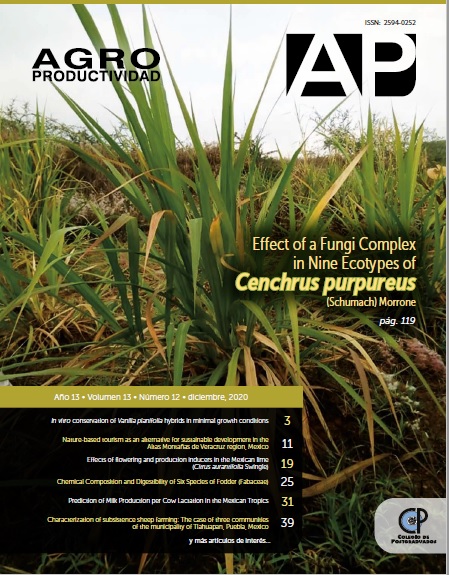Forage sorghum: yield, agronomic, and chemical composition of forage and silage, with and without fertilization
Main Article Content
Keywords
sorghum, sowing, fertilization, silage, bromatological analysis
Abstract
Objective: To evaluate the yield, structural characteristics of sorghum with and without fertilization and the quality of silages.
Design / Methodology / Approach: The evaluated variables were, in forage: dry matter yield (DMY, kg ha-1), leaf:stem ratio (L:S, g g-1), plant height (H, cm) and intercepted radiation (IR, %), and in silage: dry matter (DM, %) crude protein (CP, %), neutral detergent fiber (NDF, %), acid detergent fiber (ADF, %), lactic acid (LA, %) and pH. There were two treatments, with fertilization and without fertilization.
Results: The agronomic characteristics L:S, H and IR improved by fertilization (P<0.05). The DMY with fertilization was 7060 kg DM ha-1 and without fertilization was 5472 kg DM ha-1. The DM, CP, NDF, ADF and LA values of silage with fertilization were 33.60, 7.83, 51.06, 28.51 and 4.51 %, respectively, and the pH was 4.3, and without fertilization these values were 47.67, 5.83, 43.36, 25.21 and 2.86 %, respectively, and the pH was 4.66, all values were different when comparing with and without fertilization (P<0.05).
Study limitations / implications: These quality parameters should continue to be studied in sorghum silages and with different fertilization doses to expand the decision landscape.
Findings / conclusions: According to the results obtained, it is concluded that the sorghum crop should be fertilized for ensiling, since a higher dry matter yield, better agronomic and nutritional characteristics are obtained.

